Take Time for Comfort Food
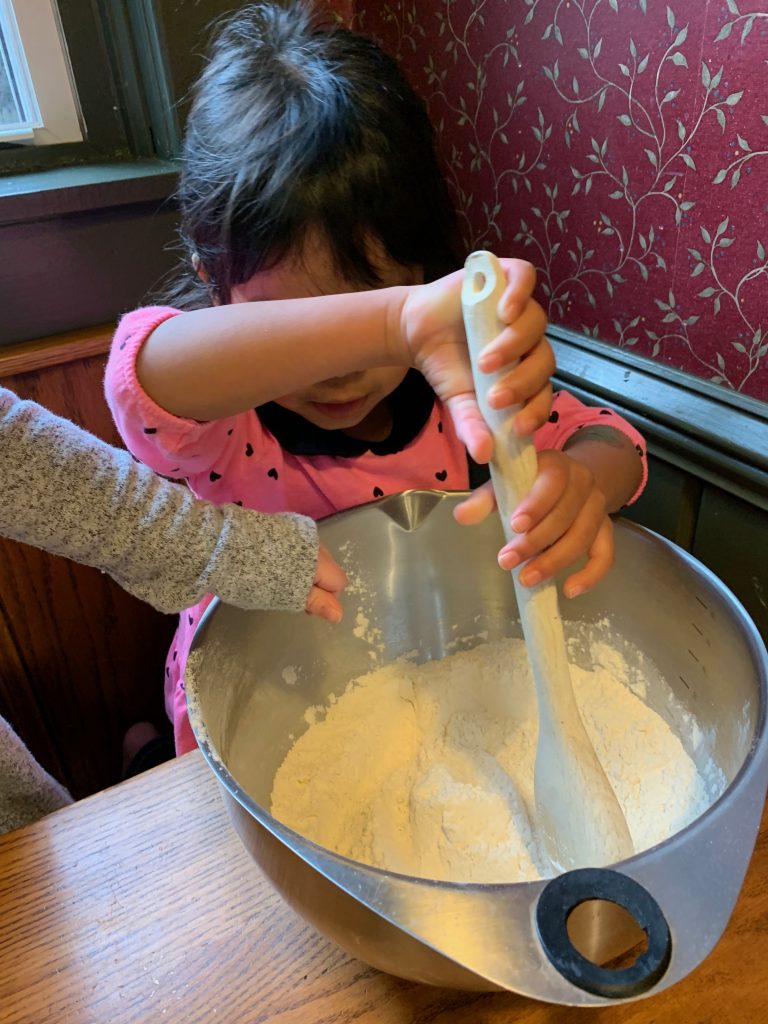
Welcome Math Friends!
As I write this blog post, the entire state of Illinois is under “shelter in place” orders to minimize the spread of Covid-19. Thank you to our state leaders for doing what is necessary to keep us safe. Thank you to everyone who is out there performing essential duties—from the healthcare workers on the front lines of the pandemic to the store clerks, restaurant employees and municipal workers who are keeping our stores stocked and our families fed and providing essential services in our communities. Thank you to the child care professionals who are caring for the children of these essential workers. Thank you all so very much for taking care of our families and our community!
Now, take a deep breath and come join me over here in “Math Land.” In this time of uncertainty, let’s all step back, slow down and focus on building a strong foundation of math through hands-on learning.
With many children sheltering in place at home and fewer children attending our early childhood programs, this is an ideal time for deep learning. This is your chance to keep it simple—without the worksheets and the screens and the busy daily routines.
If you are a parent, I urge you to read this blog and then explore this website for a wealth of enriching early math activities. Then turn off the screens! Break out a deck of cards, a pair of dice, a board game or a puzzle. You can’t mess this up. Just relax and play with your child or children!
If you are an early childcare educator, take advantage of this rare opportunity to pause, relax and reboot. With many child care centers shut down, the world is beginning to recognize how valuable our work is—and how difficult and demanding it can be. Meanwhile, we have the gift of time to return to what we know works best—hands-on play—and to reimagine our math curriculum. Now is a great time to take a hike, clear your head and let your creative juices flow.
After soothing your soul in the great outdoors, join us as we return to our early education roots. If we must shelter in place, we may as well head into the kitchen and whip up some comfort food while fostering the development of early math skills!

Cooking gives preschoolers a strong foundation in science, math, language, art and even reading. When we invite children to create in the kitchen, we provide learning opportunities in many academic subjects. Think of your ingredients as subsets that will introduce opportunities for counting, adding, measuring, dividing and estimating. As children see how certain ingredients combine, react and change as they cook, they are learning basic chemistry. Baking also brings your children together at the table to share food, conversation, observations, ideas and camaraderie.
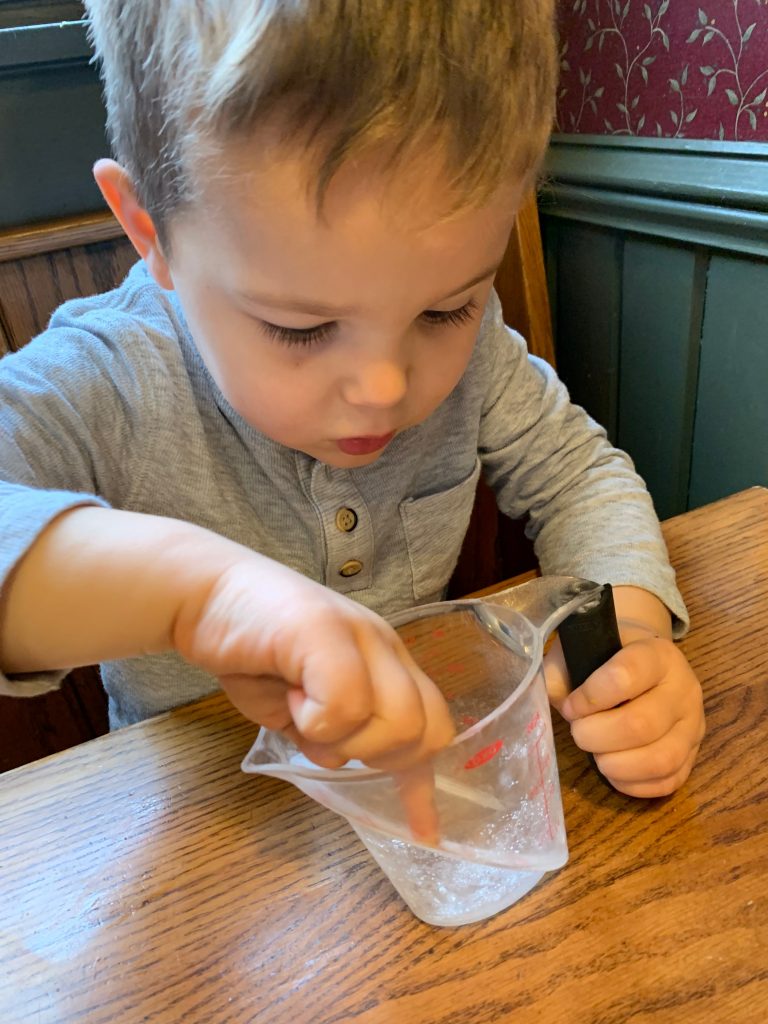
Before calling your preschoolers into your workspace, prep the area! Gather all of your ingredients and take care of the prep work that may be too difficult for the children in your care. For instance, you may need to chop or measure beforehand and then set those items out in the order that you will need them for the recipe.

When I have more ingredients than children (or more children than ingredients), I get creative. When I’m working with a younger group, I crack the eggs for the children and put them in the measuring cup. You may need to let each child add one egg or one child add three eggs, depending on how many cooks you have in the kitchen. Because you know that everyone needs a turn to do something!
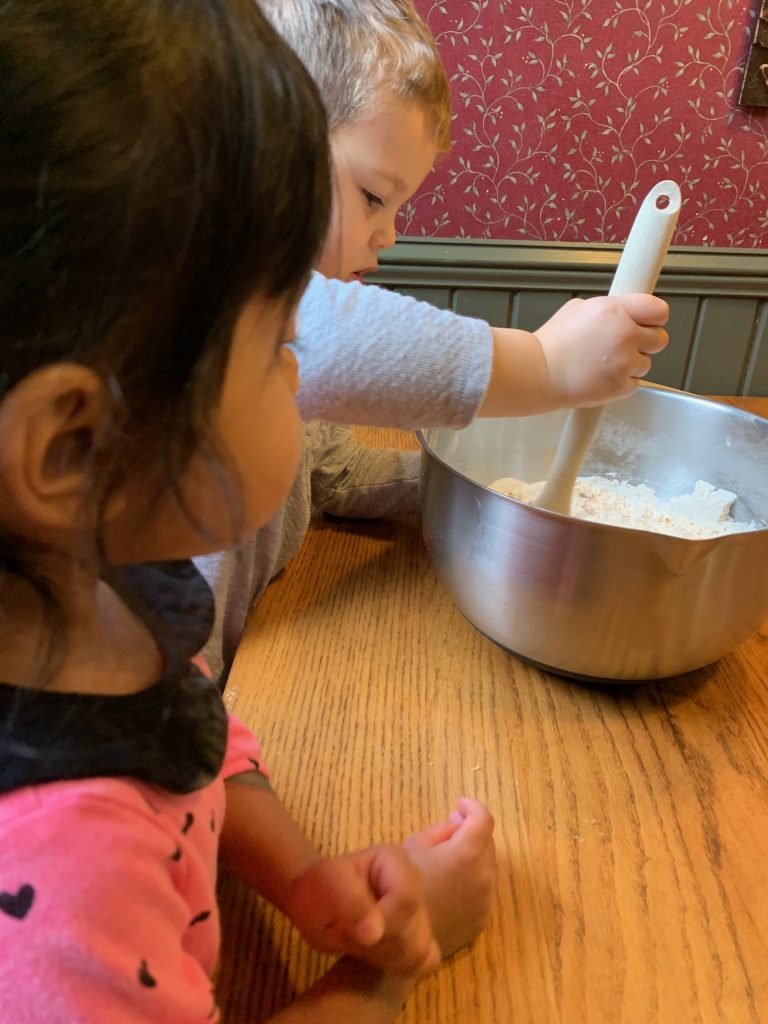 Count the ingredients. Count the eggs. Count the number of stirs that each child gets. Meanwhile, expand the vocabulary of your young chefs! Ask the children to describe what they see, taste and feel. Talk about the colors and textures. Years ago, we had a visual learner who described pouring the dirt (brown sugar) on top of the snow (flour) and then stirring in the sunshine (eggs). For years, we asked the children to repeat that same story over and over to new children in the classroom. I have no idea how much joy that silly little narrative brought to our four-year-olds!
Count the ingredients. Count the eggs. Count the number of stirs that each child gets. Meanwhile, expand the vocabulary of your young chefs! Ask the children to describe what they see, taste and feel. Talk about the colors and textures. Years ago, we had a visual learner who described pouring the dirt (brown sugar) on top of the snow (flour) and then stirring in the sunshine (eggs). For years, we asked the children to repeat that same story over and over to new children in the classroom. I have no idea how much joy that silly little narrative brought to our four-year-olds!
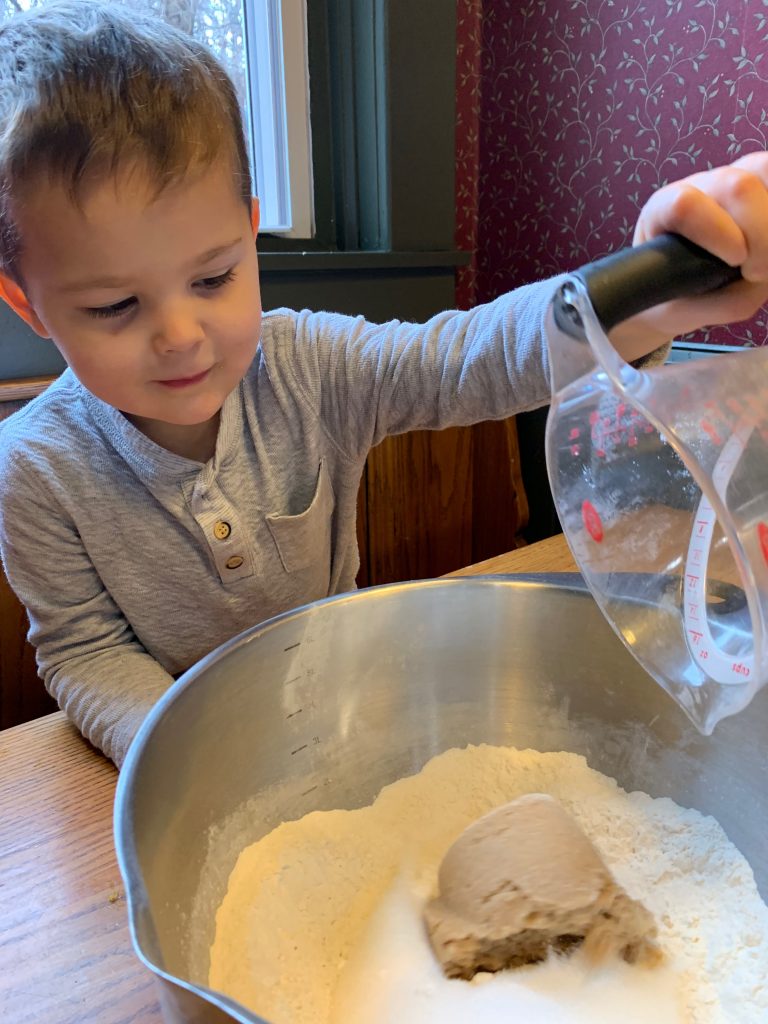
Waiting for muffins to bake can seem like an eternity when you are three. Don’t torture yourself or your students! Pick a recipe with minimal ingredients and shorter baking times. Instead of a 30-minute banana-bread recipe, make a smoothie, muffins or cookies. We use our baking time to take bathroom breaks, sweep the floor, wash the dishes, wash our hands and set the table so that we can feast on our masterpiece. If there’s still time left on the timer, then we wash our hands again!
Remember to keep it light and keep it fun. Now that life is a bit slower, sit down and enjoy the conversations and the joy of being with your child or your young learners. You’ve got this, friends. While we wait out the coronavirus, breathe and bake and give thanks for the time and space to engage in these extended activities, feast on some comfort food and engage in some delicious early math learning!
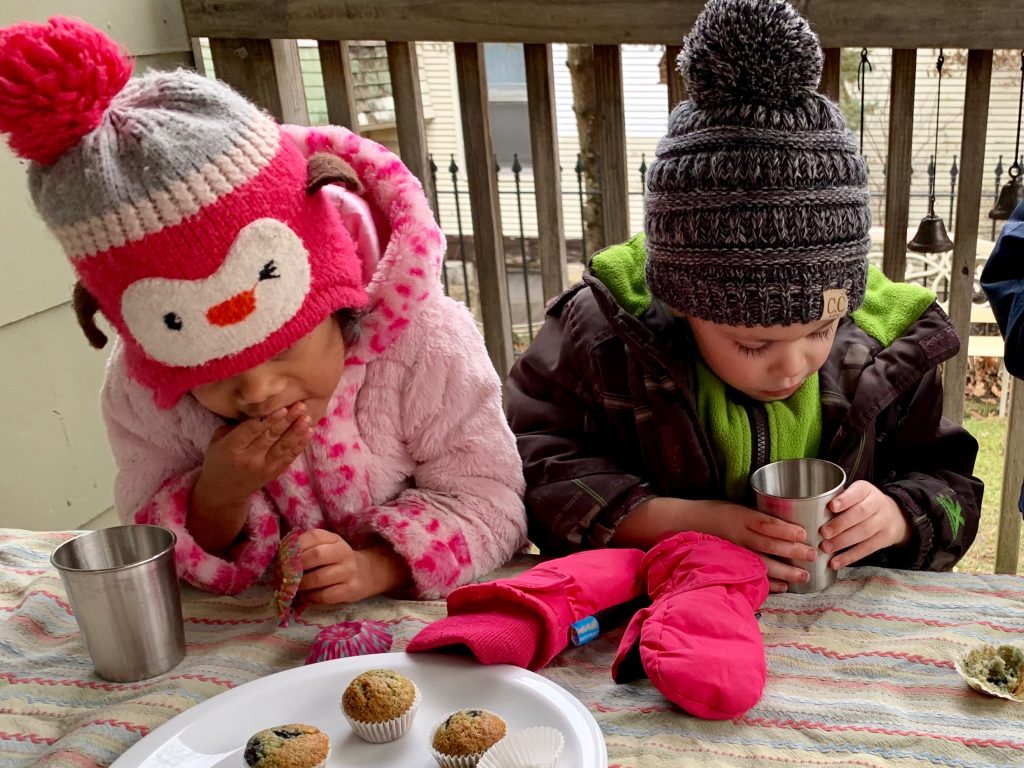
It is interesting how as parents and teachers, we can help our children learn mathematics using our environ or everyment or everyday materials, cooking, counting, comparing, all this gives our children the opportunity to learn by paying develop their cognitive skill.
Yes math is done everyday when working with young children
I find it so interesting that parents and teachers alike unknowingly are helping their children use math. Just by simply living and involving the children in everyday life, they are gaining skills that are crucial to the foundation of math.
I find this to be true I am a grandma and it helps my girls a lot especially when we are in the kitchen baking cookies showing the how to measure out everything and by the next time we are in the kitchen they have already grab the concept of measurement.
I love it! It’s so easy to add math knowledge in our daily routines. We just need to look for it! I always tell my grandkids, “Wow! You have a great math brain!” Planting the seeds! Thanks for your comment! It made me smile! Diann
Most everything in Early Childhood is math. Only one pump of soap, only one paper towel. Let’s count to twenty while we make big bubbles on our hands.
Math totally plays a huge part in baking. It is very essential to speak out loud all the exact measurements of the ingredients to the children while baking their favorite desserts.
i agree math is all around us
How can I incorporate some math into my toddlers morning activities?
Baking is great way for children to learn math!
Number sense goes well with snacking and sharing. For example, sharing a small bag of cookies with friends by counting them out!
Spatial reasoning also can be enhanced in these activities by identifying added ingredients. Like putting frosting on cookies and quantifying and categorizing sprinkles put on top!
I have always loved baking with my kids and in my classroom, excellent way to do math and in sense not even know it hehe.
Great way to use math when we cook with the children
Cooking with children is a great way to use math!
When you bake or cook with your children it is a great way to use math.
Awesome way to learn math! love it!
We are not able to count in our classroom. But we make our own play-doh. The kids enjoy measuring out the ingredients and counting the stirs it takes to mix up the play-doh. They try to guess how many stirs it will take.
I like how teachers are able to teach kids how measurment works through making food. especially comfort food. And the way they do this is by measuring out the amount of each ingriedent needed to make the food. Like when your baking cupcakes or making some kind of dough. etc.